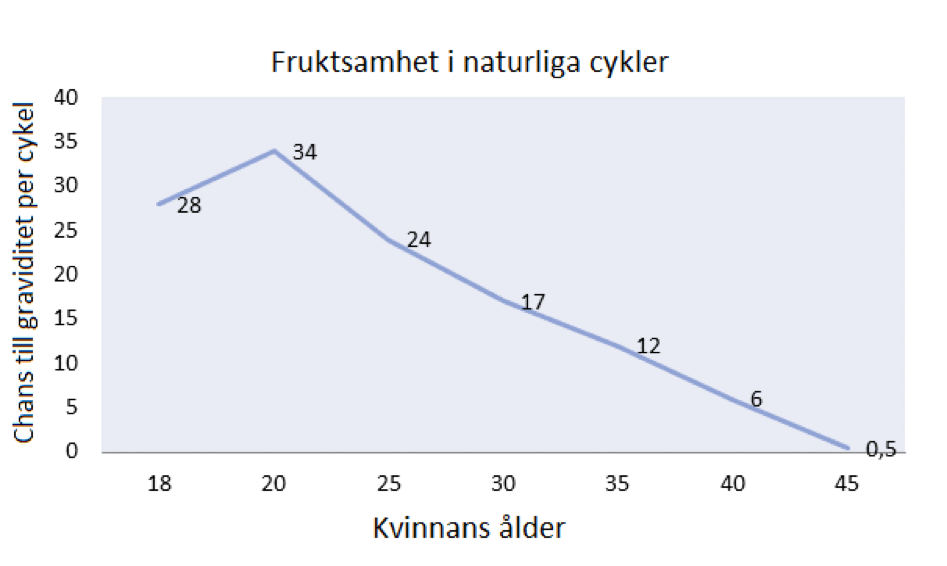Age has a great significance in fertility. A woman’s fertility declines considerably faster compared to a man’s. Fertility is at its peak up until a woman is 20-25 years old. As the figure below shows, the possibility of conception at that time is 30-35 percent if sexual intercourse takes place in connection with ovulation. At the age of 35, the ability to get pregnant has decreased to 12% and at the age of 45 only one in a hundred would get pregnant during a menstrual cycle.
Source: The graph is based on calculations on natural fertility among female Hutterites collected from Schmidt et al., 2012 (originally from Larsen and Yan, 2000)
Despite the fact that age plays a big part in a woman’s ability to get pregnant, many people choose to have children later in life. There are many pieces in the puzzle of life that need to come together. To feel ready and to find a partner who is prepared to share the parental responsibilities are described by many as important factors, as is being done with your studies and starting to work. Today, the average age for a woman in Sweden to have her first child is 29.
Many people overestimate the possibility of assisted reproduction. At the age of 42, the chance of getting pregnant with the help of assisted reproduction is only between 5 and 10 percent per treatment.
At more advanced ages, there are fewer eggs and worse quality of both eggs and sperm, which may make fertilization more difficult and result in negative consequences for the fetus’s development. If a woman is 35 or older, the risk of complications during pregnancy and birth increases, such as miscarriage, premature birth, high blood pressure and emergency Caesarean section.

